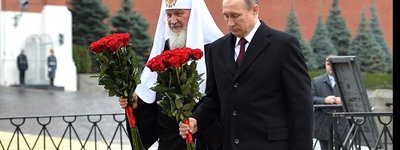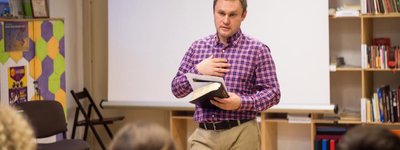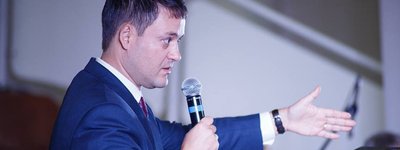Was the Church a source of fascism?
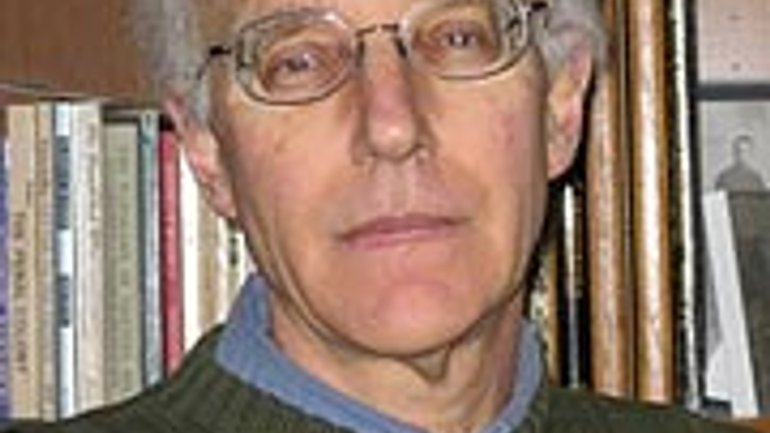
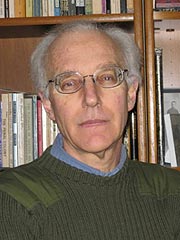 According to one report, in his March 1 talk about Stepan Bandera at the German embassy in Kyiv, Polish-born German historian Grzegorz Rossolinski-Liebe placed special emphasis on the “active and direct participation of the Ukrainian Greek-Catholic Church in support of the OUN-UPA, precisely as a movement with a pro-fascist ideology.” He even called it “a source of Ukrainian fascism.” Could this be so?
According to one report, in his March 1 talk about Stepan Bandera at the German embassy in Kyiv, Polish-born German historian Grzegorz Rossolinski-Liebe placed special emphasis on the “active and direct participation of the Ukrainian Greek-Catholic Church in support of the OUN-UPA, precisely as a movement with a pro-fascist ideology.” He even called it “a source of Ukrainian fascism.” Could this be so?
We must first point out that this report was in Russian. Mr. Rossolinski-Liebe delivered his lecture in German, with a Ukrainian translator. Thus, his message may not have reached us intact. For one thing, while German and English have articles, Ukrainian and Russian do not; thus, he may have called the UGCC “a” source of fascism among many, or “the” single source. Since the latter idea is rather preposterous, we have reported his words in the first sense.
Second, we should note that two propositions are contained in the quoted statement: first, that the UGCC supported the Organization of Ukrainian Nationalists and the Ukrainian Insurgent Army; and second, that the Church was a source of “Ukrainian fascism.”
The scandal surrounding the 32-year-old scholar’s tour of Ukraine continues to provoke a lively internet discussion. The basic facts are as follows: Mr. Rossolinski-Liebe has completed a five or six-hundred page dissertation at the University of Hamburg titled “Stepan Bandera: The Life and Afterlife of a Ukrainian Fascist, 1909-2009.” His Ukrainian tour, sponsored by the German Embassy, the Heinrich Boll Foundation, and the German Academic Exchange Service, was to include talks at Lviv and Kyiv, and two at Dnipropetrovsk. One by one the appearances were cancelled, allegedly because of threats by the nationalist youth of the Svoboda political party. Finally, on March 1 he gave his lecture at the German Embassy in Kyiv, titled “Stepan Bandera: The Life and Reputation of a Revolutionary Nationalist, 1909-2009.” The event transpired without incident.
We will take the two propositions attributed to the speaker in reverse order. First, how was the Church a “source” of Ukrainian fascism? The speaker obviously had come to the conclusion that there was something that could be termed “Ukrainian fascism.” Although much of the controversy surrounding his talk revolved around that term -- which could be understood as a term of abuse, a highly charged political category, or a neutral scholarly-historical classification -- we will assume that by “Ukrainian fascism” he meant a local variant comparable to the Arrow Cross in Hungary, the Iron Guard in Romania, or the Ustashe in Croatia. Of course these comparisons are imperfect, as there was no Ukrainian state at the time. But assuming that some such phenomenon did exist, how was the UGCC a source of it?
Most likely, Mr. Rossolinski-Liebe was thinking of the fact that both Stepan Bandera and his close associate, Yaroslav Stetsko, were the sons of Greek-Catholic priests. This by itself, of course, proves nothing. Even if it turned out that a disproportionate number of Ukrainian nationalists were children of priests, this would make the Church a “source” of Ukrainian “fascism” in only the biological sense. In the world of political ideas, biology is neither here nor there. Nor is there any reason to believe that the typical upbringing of a priest’s son would incline him to fascism. If anything, such a political choice would amount to a rebellion against paternal authority. And indeed, the young nationalists of Bandera’s generation were rebels against the utopian idealism and political ineffectiveness of their parents. Does the revolt of sons against fathers implicate the latter in the political views of the former? The daughter of a Greek-Catholic priest became a well-known feminist. Do we attribute her feminism to her father?
Perhaps the speaker meant that the Church as an organization somehow gave birth to Ukrainian fascism. Alas, the evidence hardly supports such a contention. Metropolitan Sheptytsky repeatedly condemned the terrorist practices of the OUN. While he favored the creation of a legitimate, disciplined Ukrainian military force to protect the Ukrainian people, during World War II he spoke out against the recruitment and participation of Ukrainian youth in political killing, including the Holocaust. He protested to Himmler, wrote a pastoral letter entitled “Thou Shalt not Kill,” and wrote that German fascism was even worse than Soviet communism. Bishop Hryhorii Khomyshyn of Stanyslaviv was an even more ardent critic of the nationalist movement.
Has Mr. Rossolinski-Liebe discovered that despite the condemnation of fascism by the UGCC hierarchy, rank and file clergy supported it nonetheless? It is a question worth pursuing. Perhaps he has researched the problem in depth -- though it would certainly be a departure from the topic of his dissertation, which after all is the figure of Stepan Bandera. We look forward to seeing his book.
The question of the UGCC as a “source” of fascism only makes sense in the realm of ideas. It would be difficult, however, to find anything in the theology of the Ukrainian Church that contributed significantly to the fascist ideology. Perhaps the speaker is joining those historians of ideas who believe that Christian theology is responsible for anti-semitism. Whatever the merits of that theory, the notion that any Christian Church was a significant source of fascist ideology is difficult to demonstrate. This is because there is a mountain of evidence on the ideological origins of fascism, and it can generally be traced to the philosophical rebellion against Christianity that began in the Enlightenment and culminated in the thinking of philosophers like Friedrich Nietzsche. Much of this philosophy would have reached young Ukrainian nationalists through the popular press in Austrian Galicia. But the more obvious source of Ukrainian “fascism” is the thought of Dmytro Dontsov, a very influential political philosopher from Russian-dominated Eastern Ukraine who had no connections with the Greek-Catholic Church of Western Ukraine. Dontsov’s thought in turn drew on Fichte, Herder, and other nineteenth-century German thinkers (John A. Armstrong, “Ukrainian Nationalism,” 2nd ed., 1963, pp. 21-22). One would think that the young scholar from the University of Hamburg would have found the roots of “Ukrainian fascism” there, and not in the UGCC. But perhaps he has discovered something new.
As to the other question – whether the UGCC actively and directly supported the OUN and the UPA as a movement with a “pro-fascist ideology” – it, too, must be separated into its parts. The Organization of Ukrainian Nationalists was founded in 1929 and split in 1940 into two wings, one of them headed by Stepan Bandera. The Ukrainian Insurgent Army was formed during the German occupation in 1941-42 and represented a spectrum of Ukrainian nationalist forces. Probably the closest that the UGCC came to “supporting” the OUN was when Metropolitan Andrei Sheptytsky endorsed the abortive OUN-sponsored formation of a Ukrainian government in Lviv on 30 June 1941. But his condemnations of OUN terrorism mentioned above, and the well-known friction between his Church and the young radical nationalists, give the lie to such an interpretation. As early as May 1933, the OUN opposed the Ukrainian Catholic “Youth for Christ” rally in Lviv because of its accommodationist stance towards the Polish authorities. To be sure, individual Greek-Catholic priests like Rev. Vasyl Laba and Rev. Ivan Hrynioch supported the nationalist movement. There was a solid Catholic argument for Ukrainians’ right to rule themselves in an independent state, which many of the clergy supported under the rubric of Christian nationalism. But this is still a long way from supporting a secular movement that sought to supplant the Decalogue with its own Nationalist version. As for the UPA, it appears that Metropolitan Sheptytsky preferred the order and discipline of a well-trained regular army to the ethically questionable tactics of irregular formations (Andrii Krawchuk, “Christian Social Ethics in Ukraine,” 1997, p. 267, quoting Bohdan Budurowicz). It would be interesting to see what evidence Mr. Rossolinski-Liebe has uncovered to demonstrate that “the Church” supported the UPA.
It seems unlikely that the UGCC supported the OUN and the UPA “precisely as a movement with a pro-fascist ideology.” The contradictions between Christianity and Ukrainian nationalist ideology (whether one characterizes it as “fascist,” “ultra-nationalist,” “integral nationalist,” or by some other term) were simply too great (see Armstrong, op. cit., pp. 37-38). And rather than being creatures of the Church, this ideology, and the movement that it inspired, were more likely symptomatic of the decline of its influence in an age of mass politics and secularization.





